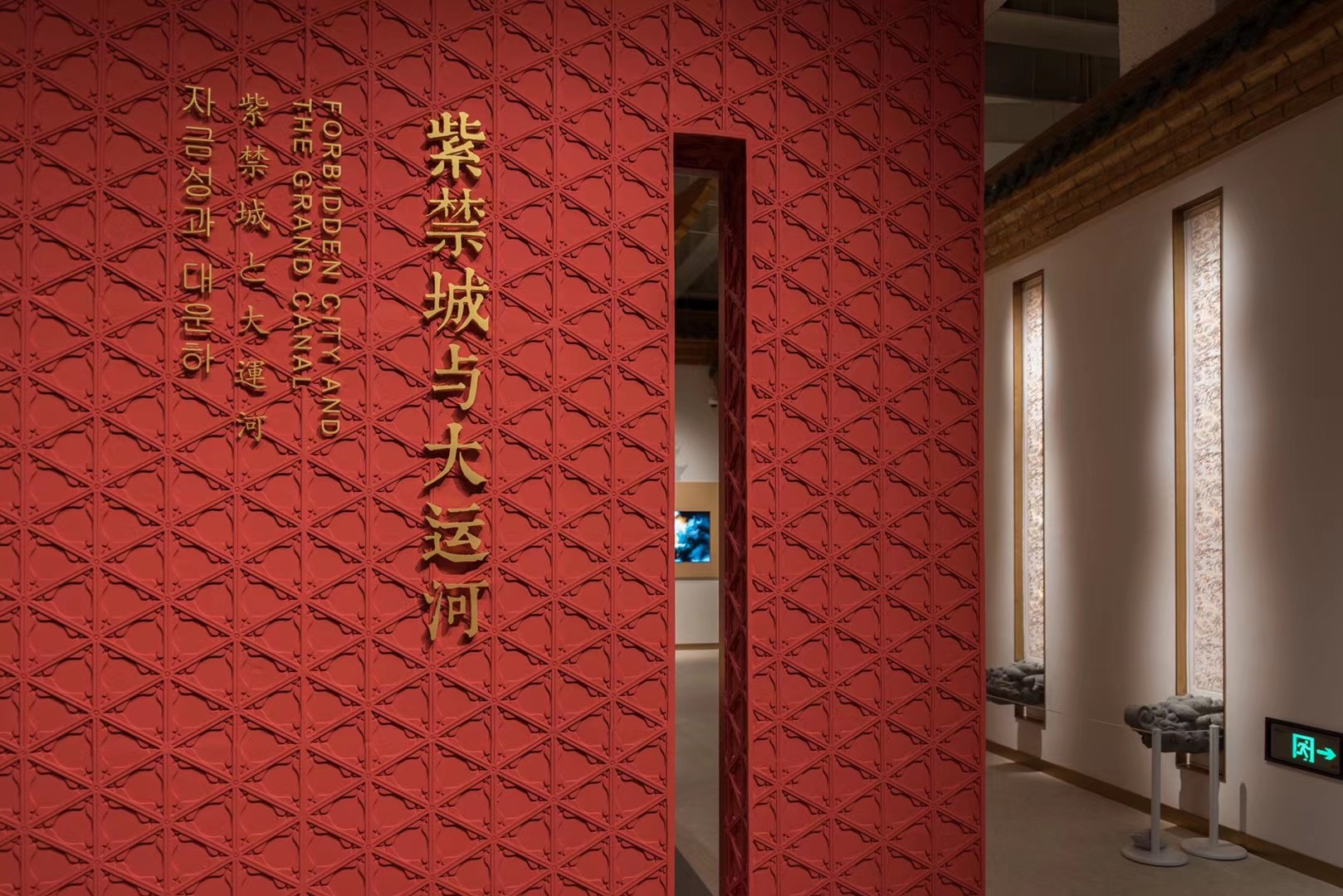The latest virtual gallery is available at:
http://audio.taoart.com/fullview/zgdyh/2/?m=ELLxHXpvSQQ
Since the Grand Canal was connected to Zhuo Commandery (in modern Hebei and Beijing) in the north during the late 6th to early 10th century, it has played a very important role in politics, economy, military, culture, and commerce throughout various historical periods. Since the Yuan, Ming and Qing Dynasties, the over 1,500-km-long Grand Canal has become China’s most important economic artery. A variety of materials needed by the capital, especially the Forbidden City, were largely transported via this canal. The Forbidden City and the Grand Canal exhibition is divided into two parts: “The Forbidden City Drifted in from Afar Along the Grand Canal” and “Gathering the Fine Things Under Heaven in the Imperial Palace.” It explores the close relationship between the construction of the Forbidden City and the Grand Canal, presenting fragments of life in the Qing Dynasty imperial palace to the audience through porcelain, lacquerware, jade, and other cultural relics that were transported northward to the palace.
The gallery emphasizes spatial transparency and integrates scenic displays with the exhibit itself. It cleverly incorporates and simplifies architectural elements of the Forbidden City to achieve a harmonious blend of functionality and aesthetic appeal. Through transparent spatial design, it establishes intrinsic connections between exhibits. A central viewing platform is constructed to offer optimal viewpoints, allowing visitors to fully appreciate the splendor of the Forbidden City.
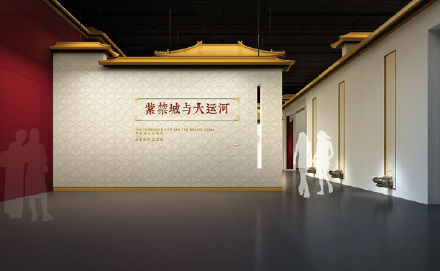
Introductory gallery
Part I: The Forbidden City Drifted in from Afar Along the Grand Canal

Gallery interior
In 1406, Emperor Chengzu of the Ming Dynasty, personal name Zhu Di, gave orders that a new capital should be built on the Great Capital of the Yuan Dynasty (today’s Beijing). With one single imperial edict tens of thousands of people were mobilized and thousands of boats sailed across the Grand Canal—a jolly scene to behold. Batches of gigantic timbers, bricks, tiles and stones, bags of rice, table salt and tea; cotton cloths, silks and brocades from Jiangsu and Zhejiang; writing brushes, ink sticks, paper and inkstones from Anhui; porcelains from Jingdezhen of Jiangxi filled cargo ships heading northward to Beijing to provide for the Forbidden City. There goes the proverb: “The Forbidden City drifted in from afar along the Grand Canal.”
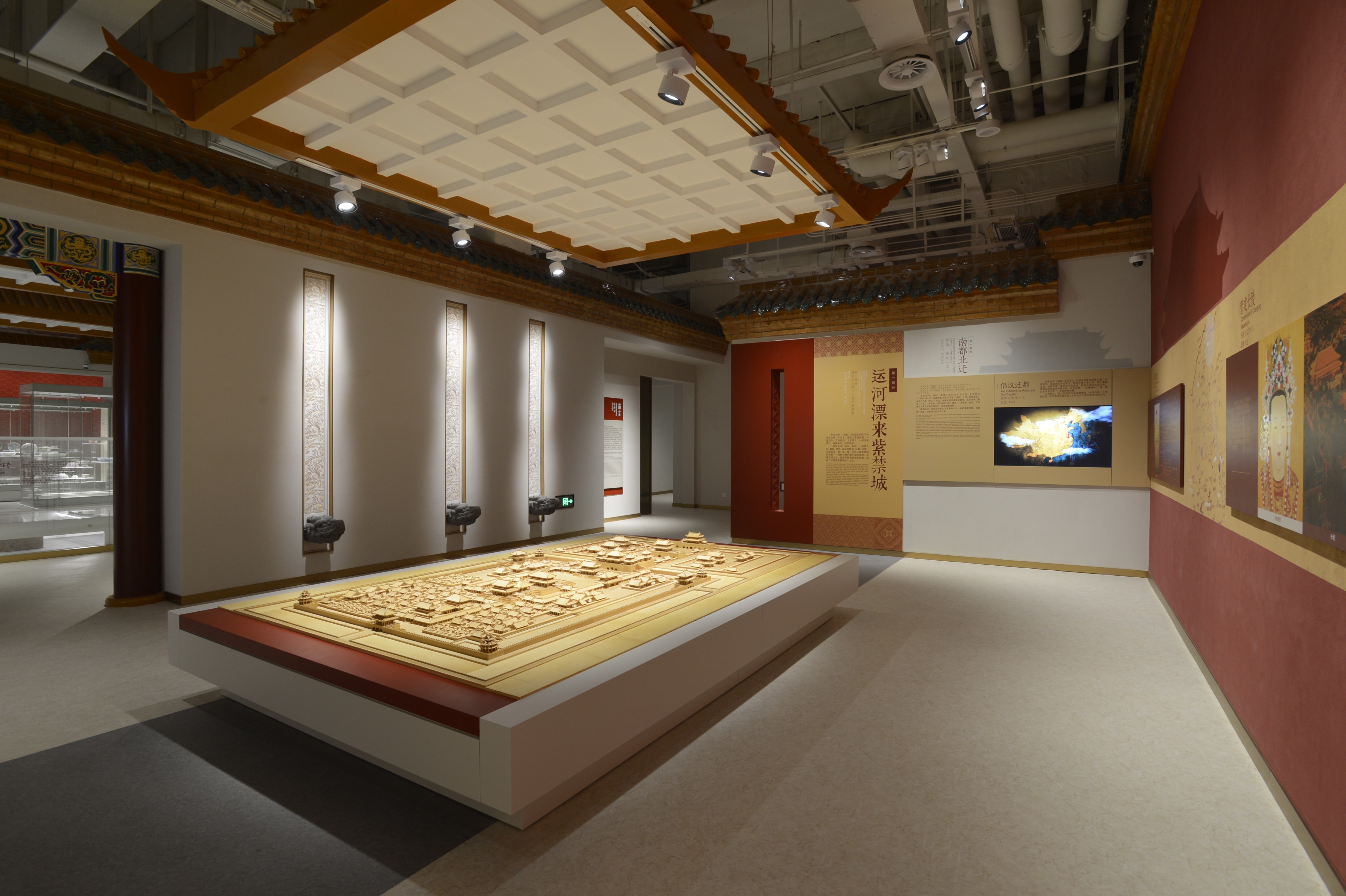
Imperial Palace model

Magnificent Imperial Palace
Part II: Gathering the Fine Things Under Heaven in the Imperial Palace


Gallery interior
All the provisions were sent to Beijing by way of the Grand Canal, including bricks, stones, timber, chariots and horses, boats, weapons and banners, seasonal fruits and vegetables, silks and tributes. All the beautiful things under heaven found their way to the imperial palace: jade ware, embroidery, silk woven with gold threads from Suzhou, carved jade and lacquerware from Yangzhou, brocade and velvet flowers from Nanjing, loose-teethed and tight-teethed combs from Changzhou, red stoneware from Yixing, as well as furniture from Jiangsu and Zhejiang... Hundred, sometimes over three thousand boats used to glide on the Grand Canal day and night all year round.
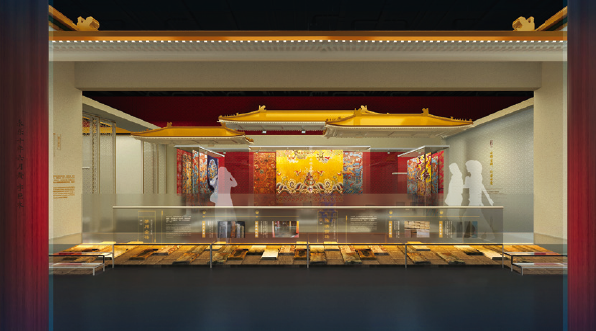
Viewing platform
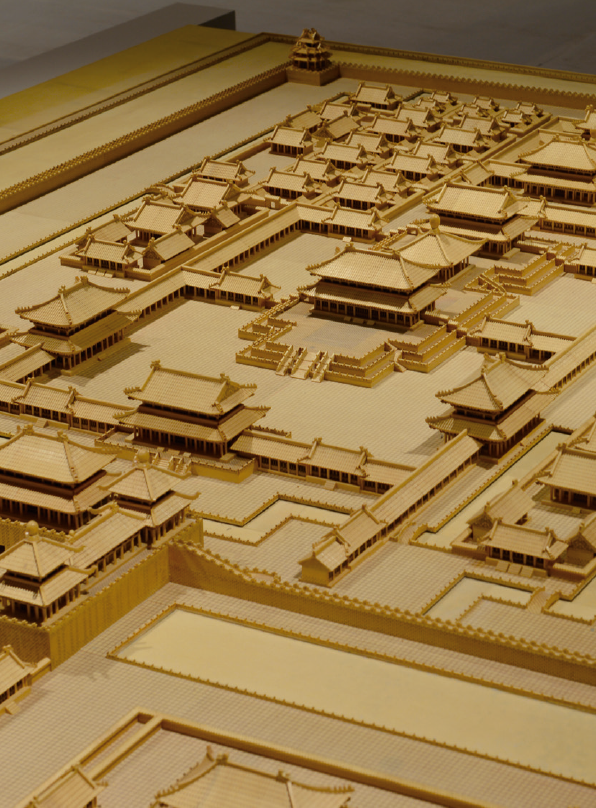
Imperial Palace model (partial view)
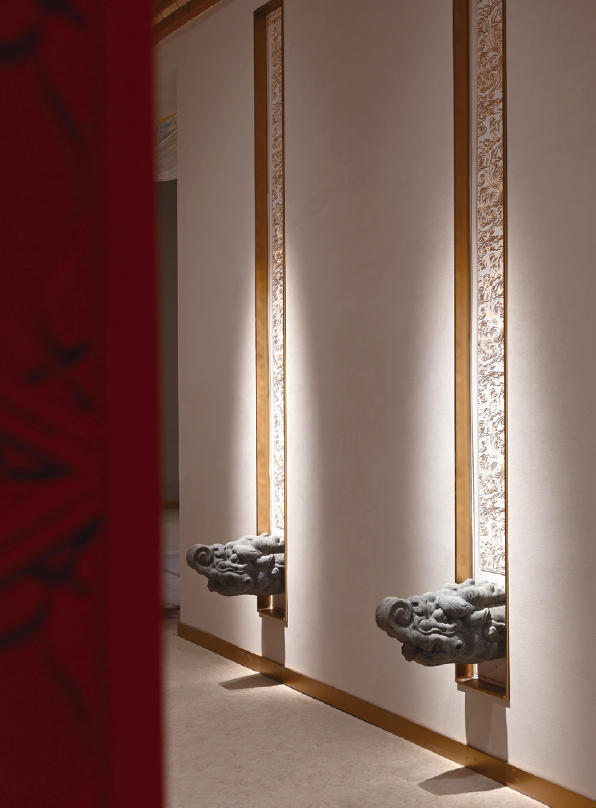
A corner of the gallery




